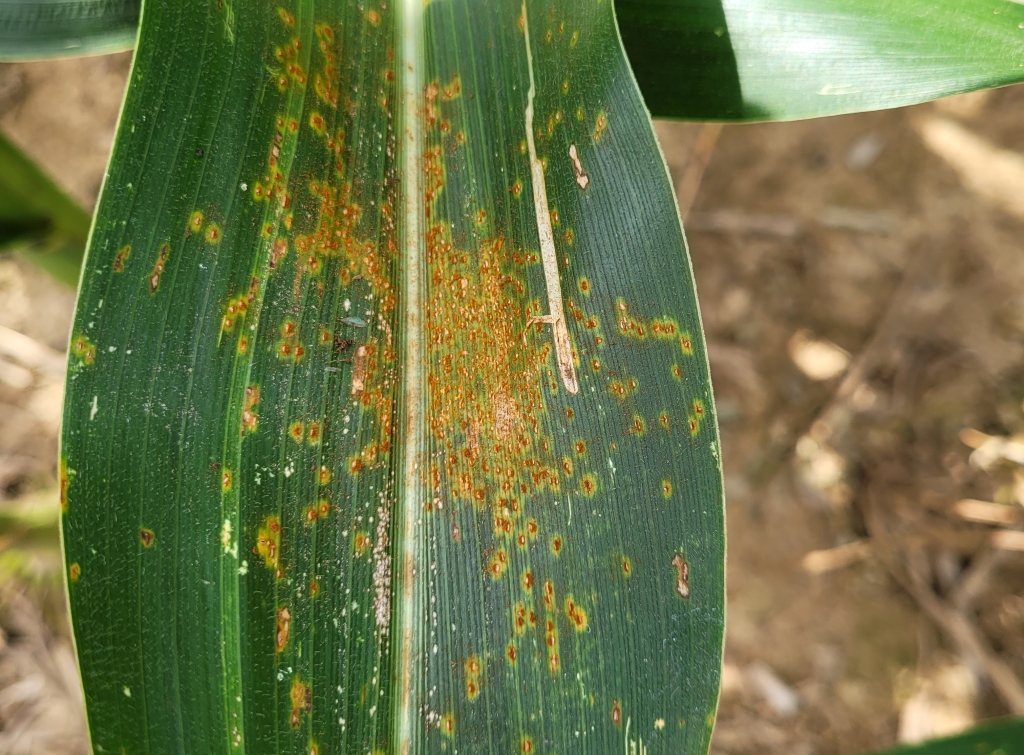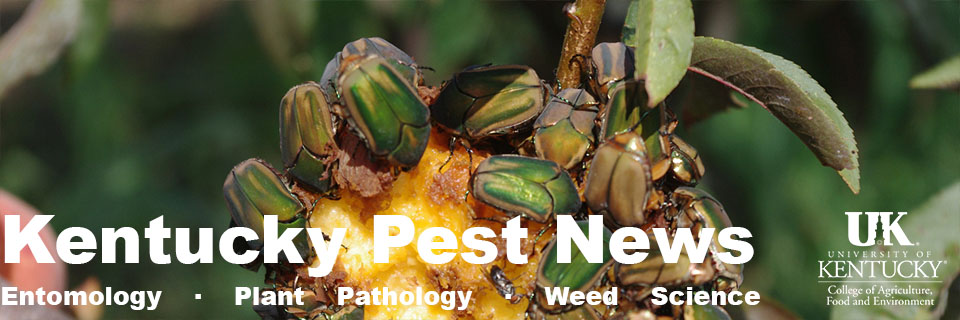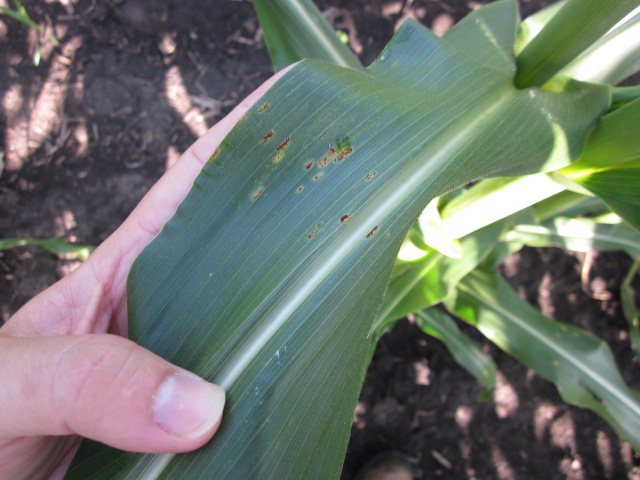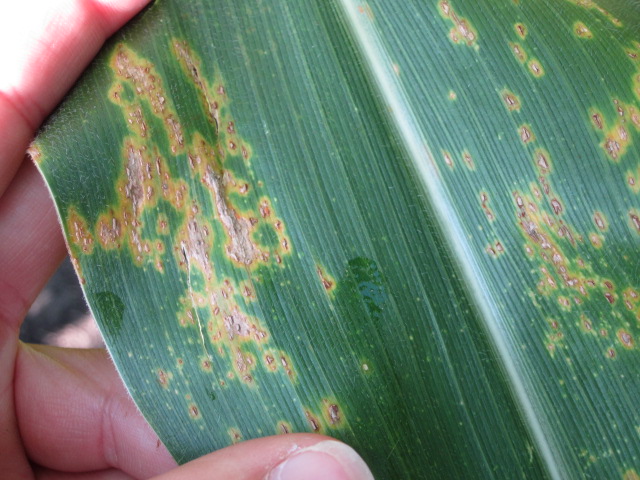Common Rust
Common rust of corn, caused by the fungus Puccinia sorghi, is easy to find in corn fields in Kentucky this year. The fungus that causes common rust produces brown to brick red pustules that are present on upper and lower surfaces of the leaves (Figures 1 & 2). Young leaves are more susceptible to rust infection than mature leaves. In most years, common rust does not require management in hybrid field corn in Kentucky, and the greatest concern is that common rust is accidentally confused for the more damaging disease, southern rust.
Southern Rust
Southern rust of corn, caused by the fungus Puccinia polysora, has been confirmed in Louisiana and Georgia so far in 2024. As of June 18, it has NOT been confirmed in Kentucky. We typically confirm southern rust in Kentucky in mid-July each year, depending on weather conditions. Southern rust is first observed as raised, dusty orange pustules on the upper surface of the leaf (Figure 3). Pustules will typically be present only on the upper surface of the leaf.

Determining Which is Which
These diseases are easily confused, and signs of the disease can vary depending on hybrid and weather conditions. Pustule position on the leaf surface (both sides of the leaf vs. upper leaf surface only) can help distinguish between the two rust diseases, but the only fail-proof way to know the difference between common and southern rust is to examine fungal spore size and shape in a diagnostic laboratory. Spore color and pustule distribution on a leaf are not reliable diagnostic techniques for these two rust diseases.
If southern rust is suspected, the fastest way to get a diagnosis through the Plant Disease Diagnostic Laboratory (PDDL) is to submit samples through county Extension agents. Confirmations of southern rust will be posted on the cornipmpipe website. On the map, red counties/parishes indicate that southern rust has been confirmed by university/Extension personnel.
It will be important to scout and monitor fields over the next few weeks and submit samples to the PDDL through local county Extension agents if you suspect you have southern rust in a field.
Disease Impact & Fungicide Applications
The potential impact of southern rust in Kentucky will depend on the crop growth stage of a field once southern rust is confirmed in an area. Previous research from southern states indicates that fungicides may be needed to protect yield while corn is in the tasseling through milk (VT-R3) growth stages. Once corn is past milk (R3), fungicides are likely not needed to manage the disease. If fields have already received or will soon receive a fungicide application this year at tasseling/silking (VT/R1), they are not likely to need a second application of fungicide once corn reaches the blister (R2) growth stage. For areas where planting was significantly delayed, careful scouting and monitoring for disease presence is key to determining if or when a fungicide will be needed for southern rust management.
Additional information
More information on timing of fungicide applications for southern rust can be found in Table 2 of the Crop Protection Network publication on Southern Rust. The efficacy of specific fungicide products for southern rust are described in the updated fungicide efficacy table for management of corn diseases, which is developed by the national Corn Disease Working Group.
By Kiersten Wise, Plant Pathology Extension Specialist


